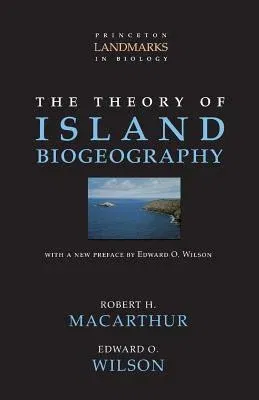Robert H MacArthur
(Author)The Theory of Island Biogeography (Revised)Paperback - Revised, 18 March 2001

Qty
1
Turbo
Ships in 2 - 3 days
In Stock
Free Delivery
Cash on Delivery
15 Days
Free Returns
Secure Checkout

Part of Series
Princeton Landmarks in Biology
Print Length
224 pages
Language
English
Publisher
Princeton University Press
Date Published
18 Mar 2001
ISBN-10
0691088365
ISBN-13
9780691088365
Description
Product Details
Book Edition:
Revised
Book Format:
Paperback
Country of Origin:
US
Date Published:
18 March 2001
Dimensions:
21.59 x
13.97 x
1.17 cm
Genre:
Ecology
ISBN-10:
0691088365
ISBN-13:
9780691088365
Language:
English
Location:
Princeton
Pages:
224
Publisher:
Weight:
258.55 gm